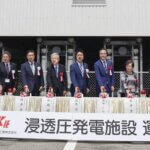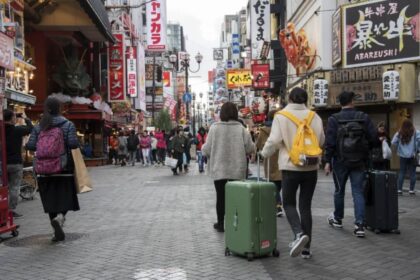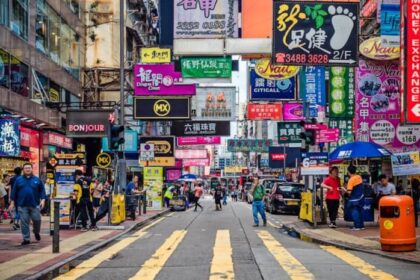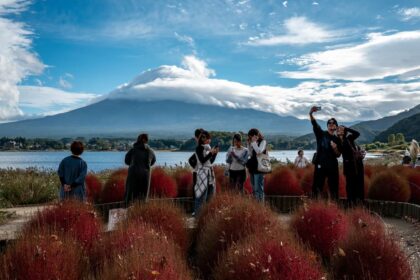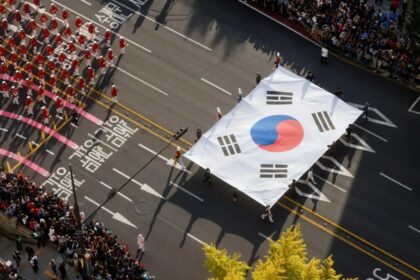Japan’s WWII Memory at a Crossroads
As Japan marks the 80th anniversary of its surrender in World War II, the nation finds itself at a pivotal moment in how it remembers—and learns from—its wartime past. The collective memory of the war, once firmly rooted in pacifism and remorse, is now shifting. This change is not merely academic: it carries profound implications for Japan’s domestic politics, its relations with neighbors, and the stability of East Asia.
- Japan’s WWII Memory at a Crossroads
- From Pacifism to Revisionism: Competing Narratives of the War
- Generational Change and Political Shifts
- Commemorations, Controversies, and the Fading Memory of War
- Regional Repercussions: Memory, Alliances, and Security
- Has Japan Truly Changed? The Debate Over Remilitarization
- What’s at Stake for East Asia?
- In Summary
For decades, Japan’s postwar identity was defined by a commitment to peace, enshrined in its 1947 constitution and reinforced by a national narrative that renounced militarism. Today, however, a growing revisionist movement is challenging this legacy, raising fears both within Japan and across the region that the country could be drifting toward a more assertive—and potentially militaristic—future.
From Pacifism to Revisionism: Competing Narratives of the War
Japan’s memory of World War II has never been monolithic. Two main narratives have shaped public understanding and policy since 1945: the traditional pacifist narrative and the revisionist perspective.
The Traditional Pacifist Narrative
After Japan’s defeat, the Allied occupation—led by the United States—sought to demilitarize Japanese society and prevent any return to the aggressive nationalism that had fueled the war. The 1947 constitution, particularly Article 9, became the cornerstone of this effort. Article 9 explicitly renounces war as a means of settling international disputes and restricts Japan’s military to strictly defensive roles.
This pacifist ethos was reinforced through education. Japanese schools adopted peace education programs that emphasized the horrors of war and the dangers of unchecked nationalism. The narrative cast the Japanese people as victims misled by militaristic elites, and it encouraged somber reflection on Japan’s wartime atrocities, such as the Nanjing Massacre and the suffering of “comfort women.” However, public discussion of these crimes was often muted, with survivors and traditionalists speaking out most forcefully when they sensed a resurgence of militarist sentiment.
For many older Japanese—those who lived through the war or its immediate aftermath—this narrative remains deeply held. They see Article 9 as a bulwark against repeating the mistakes of the past and support Japan’s pacifist foreign policy, which for decades avoided even non-combat roles in international peacekeeping missions.
The Rise of Revisionism
Since the 1950s, a revisionist narrative has steadily gained ground. This perspective argues that Japan’s wartime actions were, at least in part, a response to Western imperialism and that the country was itself a victim—especially in light of the atomic bombings of Hiroshima and Nagasaki. Revisionists often frame the war as a misguided but morally justified attempt to liberate Asia from Western domination, downplaying or rationalizing Japanese aggression and atrocities.
General Ishiwara Kanji, a wartime leader, articulated this view at the Tokyo War Crimes Tribunal, stating:
“When Japan did open its doors and tried dealing with other countries, it learned that all those countries were a fearfully aggressive lot. And so for its own defence it took your own country as its teacher and set about learning how to be aggressive. You might say we became your disciples.”
This narrative, by failing to unequivocally condemn militarism, opens the door to calls for rearmament and constitutional revision. Revisionists argue that Japan should restore its military capabilities and play a more assertive role in regional security, often opposing Article 9 as an outdated constraint.
Generational Change and Political Shifts
The generational divide in Japan’s war memory is stark. As the population of wartime survivors dwindles, younger Japanese—who have grown up further removed from the direct experience of war—are increasingly exposed to revisionist media and political messaging. This shift is reflected in recent elections, where ultranationalist and pro-revisionist parties like Sanseitō have made significant gains, particularly among young voters.
Sanseitō, which glorifies Japan’s imperial past and advocates revoking Article 9, secured over 12% of the national vote in the latest upper house elections, up from just 3.33% two years prior. The party’s rise signals a broader trend: a growing willingness among segments of the population to reconsider Japan’s pacifist stance and embrace a more assertive national identity.
This political shift has not gone unnoticed by Japan’s neighbors. China, which suffered devastating losses during Japan’s wartime occupation, has repeatedly condemned any moves to revise Article 9 or whitewash history. South Korea and other countries in the region also view Japan’s rightward drift with suspicion, fearing a resurgence of the militarism that once brought devastation to East Asia.
Commemorations, Controversies, and the Fading Memory of War
The 80th anniversary of Japan’s surrender was marked by solemn ceremonies and moments of reflection. Prime Minister Shigeru Ishiba expressed “remorse” over the war, using the term for the first time in over a decade, but stopped short of directly apologizing for Japan’s aggression across Asia. This omission reflects the delicate balance Japanese leaders must strike between acknowledging the past and appeasing nationalist constituencies at home.
At Tokyo’s Budokan Hall, thousands of officials and bereaved families observed a moment of silence, while Emperor Naruhito expressed hope that the “ravages of war will never be repeated.” He emphasized the importance of passing on the tragic history to younger generations—a task made more urgent as the wartime generation passes away.
Yet, even as official ceremonies stress peace and remembrance, controversies persist. Visits by right-wing politicians to the Yasukuni Shrine—a site that honors Japan’s war dead, including convicted war criminals—continue to provoke outrage in China and the Koreas. Critics see these visits as a tacit endorsement of Japan’s militarist past and a sign of insufficient remorse.
Meanwhile, revisionist pushbacks have grown more vocal. Some lawmakers have denied Japan’s responsibility for atrocities such as the Nanjing Massacre or the mass civilian deaths in Okinawa, fueling debates over how history should be taught and remembered. Editorials in major newspapers, like the Mainichi, have called for Japan to work with its Asian neighbors as equal partners and to show a vision for a world without war, grounded in honest reflection on its own history.
Regional Repercussions: Memory, Alliances, and Security
Japan’s shifting memory of World War II is not occurring in isolation. Across East Asia, historical memory is being mobilized for political ends, shaping alliances and fueling tensions.
China’s Narrative and Strategic Messaging
In China, official commemorations of the “War of Resistance Against Japanese Aggression” have become more prominent, emphasizing national unity and the Communist Party’s leadership in achieving victory. Under President Xi Jinping, China has recast its wartime experience as a triumph over foreign aggression, using history to bolster patriotism and legitimize its rise as a global power.
Anti-Japanese sentiment in China remains potent, and any perceived whitewashing of Japan’s wartime actions can trigger large-scale protests. Chinese officials have warned that Japan’s moves toward rearmament and constitutional revision threaten regional stability and violate the postwar international order.
Russia’s Memory Politics
Russia, too, has weaponized historical memory for political purposes. President Vladimir Putin’s government has promoted a patriotic, state-sanctioned narrative of World War II that emphasizes Soviet victory over militarist Japan. Russian textbooks and commemorations increasingly portray Japan as a historical aggressor, and Moscow has joined Beijing in pledging to defend the “correct historical memory” of the war. This alignment raises concerns about coordinated efforts to shape historical narratives for strategic gain.
Shifting Alliances and U.S. Policy
The United States, once the architect of Japan’s pacifist order, has gradually accepted Tokyo’s more assertive stance as a counterbalance to China’s rise. American leaders have participated in joint commemorations with Japanese officials, emphasizing the alliance’s role in promoting peace and democracy. However, this shift has drawn criticism from Beijing, which accuses Washington of enabling Japanese revisionism and undermining regional reconciliation.
Has Japan Truly Changed? The Debate Over Remilitarization
Amid these debates, a fundamental question persists: Has Japan truly changed since World War II, or does the specter of militarism still linger beneath the surface?
On one hand, Japan’s postwar record is remarkable. The country has enjoyed its longest period of uninterrupted peace, built a vibrant democracy, and become a global economic powerhouse. Its pacifist constitution and strong public opposition to war have served as effective checks on remilitarization. Even modest proposals to revise Article 9 face significant political and public resistance.
Yet, critics argue that Japan’s reckoning with its imperial past remains incomplete. While the government has issued numerous apologies and paid reparations, it has often treated its wartime legacy as a diplomatic issue rather than a matter of deep national reflection. The reluctance to fully acknowledge or educate younger generations about atrocities has left historical wounds unhealed, fueling suspicion among neighbors and complicating Japan’s quest for “normal” great power status.
Modern Japanese nationalism, some analysts note, is largely defensive—motivated by a sense of being unfairly maligned rather than by revanchist ambitions. Still, the rise of revisionist parties and the erosion of pacifist norms among younger generations raise legitimate concerns about the direction of Japanese society and policy.
What’s at Stake for East Asia?
The stakes of Japan’s shifting memory are high. East Asia is already fraught with potential flashpoints: tensions over Taiwan, North Korean missile tests, and Russia’s growing influence all threaten regional stability. The prospect of a remilitarized Japan—no longer constrained by the lessons of its imperial past—adds another layer of uncertainty.
For Japan, the challenge is to balance the desire for a more assertive international role with the need to maintain trust and reconciliation with its neighbors. For the region, the way Japan remembers and teaches its wartime history will continue to shape perceptions, alliances, and the prospects for lasting peace.
In Summary
- Japan’s memory of World War II is shifting from a pacifist, remorseful narrative to a more revisionist perspective, especially among younger generations.
- The traditional narrative, rooted in the postwar constitution and peace education, renounces militarism and emphasizes reflection on wartime atrocities.
- The revisionist narrative frames Japan as a victim of Western imperialism and downplays or rationalizes its wartime aggression, fueling calls for rearmament and constitutional revision.
- Political shifts, including the rise of ultranationalist parties like Sanseitō, reflect growing support for a more assertive Japanese military posture.
- Japan’s neighbors, particularly China and South Korea, view these developments with suspicion and fear increased regional tensions.
- Official commemorations and public debates reveal deep divisions over how Japan should remember and learn from its past.
- Across East Asia, historical memory is being mobilized for political purposes, shaping alliances and fueling strategic competition.
- While Japan has changed dramatically since World War II, the way it confronts—or avoids—its wartime legacy will continue to shape its role in the region and the world.



